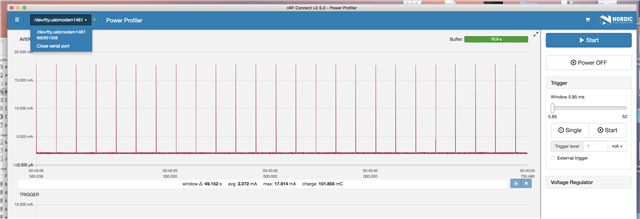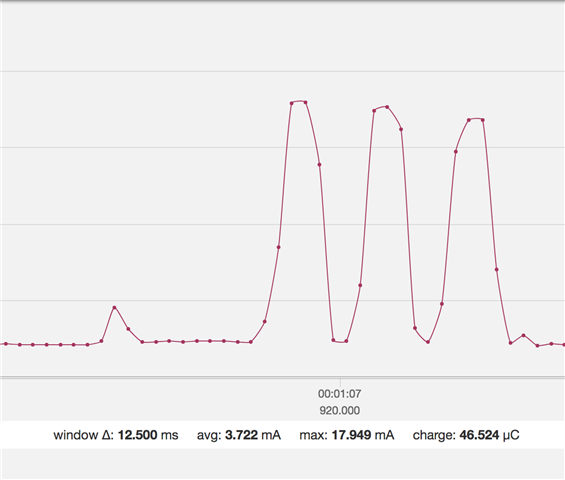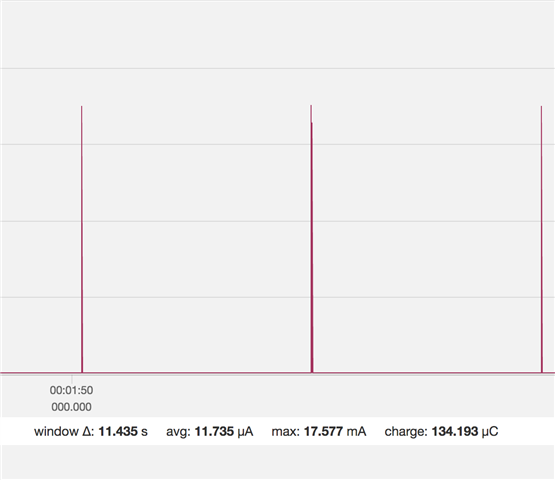Hi,
I am relatively new to programming hardware at this level, and have developed our product on the 52832, so finally I have purchased the Power Profiler Kit, and downloaded the NRFConnect and power profiler software.
Please see the attached screen shot, and can I ask if this is a good result in power consumption, or should I be trying to improve it further?
Sorry for such a newbie question, and any extra information or links to information to learn about power consumption more, would be fantastic, and much appreciated.
Cheers and thanks in advance for your help
Jason




